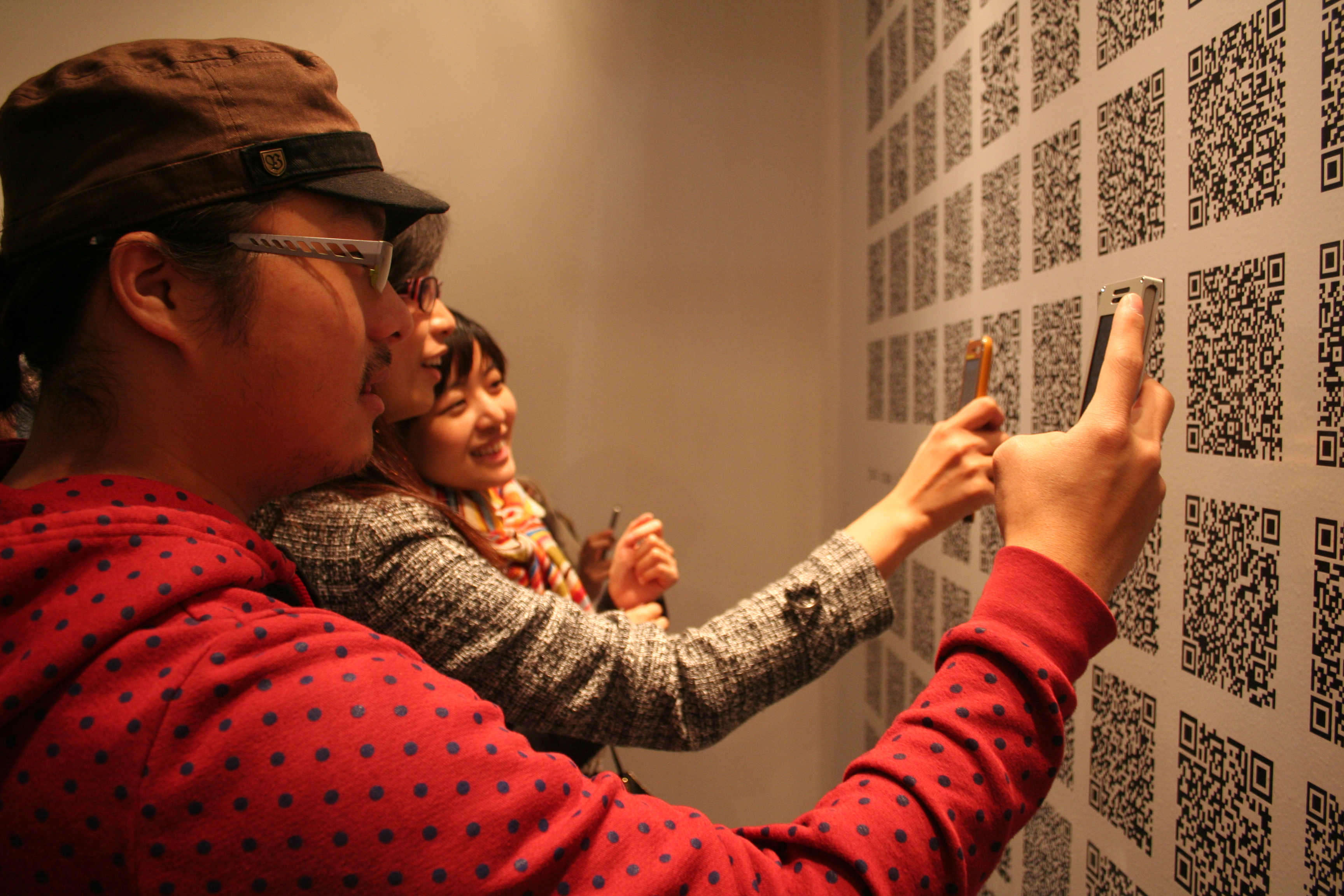There are always research elements in my artworks
Winnie Soon, a PhD student of Information Studies, has contributed to an exhibition about media art in Hong Kong with “Jsut code”, an artwork showing Twitter messages that must be decoded using a smartphone.
![[Translate to English:] Photos from the exhibition "Jsut code" by Winnie Soon and Helen Pritchard. Visitors decoding QR-codes with their smartphones. [Translate to English:] Photos from the exhibition "Jsut code" by Winnie Soon and Helen Pritchard. Visitors decoding QR-codes with their smartphones.](/fileadmin/dac/nyhedsfoto/Jsut_code_Winnie_Soon_02.jpg)

In the recent retrospective exhibition “No References: A Revisit of Hong Kong Video and Media Art from 1985”, Winnie Soon and Helen Pritchard’s digital installation “Jsut code” was represented as one out of several artworks as an archive of media artworks. The overall exhibition shows the development of media art in the last 30 years as a reflection of Hong Kong’s history.
Code connects humans and machines
In the original installation “Jsut code”, which Winnie Soon created in 2010-2012 in collaboration with the British artist and researcher Helen Pritchard, anonymous tweets were shown which contained the words “life” or “death”.
The Twitter messages are pictured as QR codes on the wall. As a visitor you decide which codes you want to decode with your smartphone to make the readable text appear on your screen.
According to Soon, “Jsut code” shows something about the connections and collaborations between humans and machines:
“The work explores the entangled activities of reading and writing by human and machine, or a 'more than human' writing and reading that takes place in the cloud,” says Winnie Soon, a PhD student of Information Studies at Aarhus University
Working as an artist/programmer/researcher
To Winnie Soon, research and art are closely interconnected:
“I think the inquiry line is somewhat similar both in research and artistic practices. There are always research elements implied in my artworks, and conversely, artworks are always demonstrated in, or are part of, my academic writing. If text can produce new insights and understanding of the world, I would argue that a creative process such as artistic practice can do the same,” says Soon.
"If text can produce new insights and understanding of the world, I would argue that a creative process such as artistic practice can do the same.”
What is code?
The title “Jsut code” was found by accident in a text conversation. It underlines that there is code behind all the digital texts that we read:
“The title of the work is informed by the Skype conversation with my collaborator Helen Pritchard, who is based in the UK. When we were thinking about the title of the work we both just wanted to type “Just code” originally. But we both made the same typo by accident!
We felt this was actually a better title of the work as it raised the questions: What is code essentially? And how does code relate to reading, writing and typing? These questions are quite important to me because I am also an artist-programmer, and code is my central medium and helps my thinking about the world,” explains Soon.
An archive of media art
At the recent exhibition in Hong Kong, photos from the installation were presented, as well as a book, with the goal of using an “investigative archival” approach to show the relationship between art, history, time and memory. With the book, the artists intend to expand their thoughts on “jsut code” through a performative method, which is not exactly a documentation, nor a research paper, but a mix of research insights, reflections and regarding code as an archive.
Further information:
Read about Winnie Soon’s research on her website or Pure profile page
The artwork “Jsut code” was originally made for the exhibition called Computational Thinking in Various Art Forms in 2011, curated by Writing Machine Collective - Read more about the piece and see more photos
